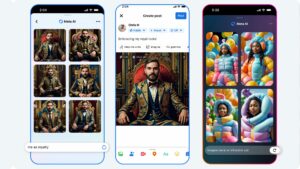Antony Christov: Today, Without Technologies, Artists Would Have No Tongue To Express Themselves
Before recently coming back to Bulgaria, Antony Christov spent 30 years in Hollywood, 18 of which as the art director at Pixar. When we asked about the three achievements he is most proud of, he didn’t talk about Finding Nemo or any other well-known title he was involved in. He told us about his three daughters. The former Pixar art director seems to have reached a point in his career, where he’s no longer focused on his personal success, but rather on the impact of what he’s learned and experienced.
Youth is a major topic for Christov. He recently came back to Bulgaria and started a project that he believes will impact the local education sector and economy. “If I do a fraction for Bulgaria of what me and my colleagues in our long careers have done for Hollywood, I would feel accomplished,” is his motivation to start ARC Academy, a multidisciplinary that aims to educate talent for the creative tech industry. Prior to that, he led a similar project in Italy called IDEA Academy.
+++ Former Pixar Art Director is Launching a Multidisciplinary Creative Academy in Sofia +++
Christov might look reserved on the first sight. He is someone who knows what exactly he needs and wants to happen next and also how to ask for it. We were millimeters close to changing the form of this interview. Then he opens up and shares what moves him and what helped him be there where he is today. He defines himself as an artist, but also a manager. The combination of these two skills is his superpower, Christov says, and this is something he wants to infuse in the creative sector.
Trending Topics: What is your skill that brought you to such a career in Hollywood?
Antony Christov: Probably the most important is management skill. It’s important for a manager to be aware and familiar with the subject and the production they are managing. In one of our programs, we want to teach exactly this. You cannot be a manager if you are not familiar with what is that you are managing.
What are the most interesting roles in the creative tech space people are not aware of?
I think the gaming industry, for example, is mistery for many people, but it’s gaining momentum in Bulgaria. The companies that are hiring they are planning to double their employees here. This is an exciting industry and there are many roles there. What is level design? Level design is creating the worlds that the game sucks you into. The idea of a game is to immerse yourself. It’s pretty technical term but it’s creative too. This is just one example of where creativity and technology blends.
Can artists and developers work together? And why is that important?
My best friends were technical people. There are so interesting and in a way more innocent. Most of us artists are quiet and shy, we go to the corner and do our thing. I’ an exception, I talk a lot. Technical people are very different and they talk a lot.
Why are creative industries so important for the local economy?
We have such limited human resources, that if we rely on outsourcing forever, we gonna be elbowed out by so many more populist nation. We hope we are going to keep young people here and grow the industry.
If you have 30 seconds to inspire children and youth that consider a career in art, what would you tell them?
There’s no difference between commercial art and art. Art has always had a commercial proposition. Leonardo and Michelangelo were people who ran studios. It’s important for children to know that they can be creators and artists, but they can at the same time work for companies, create their own companies. There’s no contradiction between business and creativity.
Watch also:
+++Milin Djalaliev: A Brand Is A Projection Of Everyone On Your Team+++




























